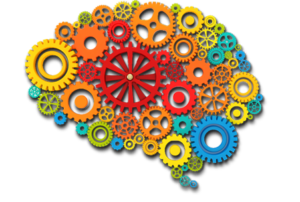INTRODUCTION
When designing products, there is a need to consider the psychology aspect of the user, since it has a direct connection to emotions. When a product isn’t design properly and creates difficulty for the user, it can lead to frustration and irritation, instead of providing a pleasurable experience.
In today’s world there is a challenge when it comes to modern designs to young adults with mental illnesses, since studies have shown that the level of stress is higher, resulting in a higher number of young adults suffering from anxiety, depression and attention deficit hyperactivity disorder (ADHD). With this very serious and important information in mind, there should be a specific consideration when it comes to the nature of interaction between people and technology.
CHALLENGES & SOLUTIONS
With this knowledge in mind, the features of products should consider the challenges of young adults with mental illnesses from the very early stages of design. The design should offer alternatives that cater to the needs of this group, that makes them comfortable with using the product in a way that doesn’t result in more stress due to the frustration of unusable products.
For example, if we look at apps designs, to be successful when it comes to using human psychology as an asset to stand out, they need to be simple and organized, with a safety net, so young adults that suffer with anxiety and depression don’t feel the need to punish themselves when making a mistake. They shouldn’t be reminded that, due to poor design, they weren’t able to use the app properly and they can fall in a dark place, because they will blame themselves and not the design itself.
A successful product design for these vulnerable users should be a channel of support, meaning the product should be designed to make the lives of young adults with mental illnesses easier, providing them with the chance to use products that they might have considered triggering in the past. For example, when users have anxiety to call customer support with doubts about the product, there should be an alternative, such as the possibility to text their concerns, or even do it anonymously.
The knowledge of human psychology shouldn’t just be used for technological products such as apps, products that are part of our daily lives should also consider the known stressors and avoid them. Frustration and irritability can be considered a normal human response, but when users are more vulnerable or have a deeper emotional response to the usability of products, the design has a bigger responsibility to keep that in mind in order to become successful. The human psychology can offer endless knowledge about how designs can be more successful, but it’s also important to keep in mind that it is not possible to create a design that will cater to 100% of the users needs.
The design should focus on an aspect of human psychology and invest in it to make it proper for the usage by a specific community. In this blog post the focus was based on the community of young adults that suffer from certain mental illnesses that are getting more common due to the stressors of our daily lives. If designers keep that in mind, they will be helping not only the general community – since a good design consists on pleasurable product usage – but also take a step ahead into the future by tackling issues that other designs lack.
REFERENCES:
(DOET) Norman, D. (2013). The Design of Everyday Things:
Revised and Expanded Edition. New York, NY: Basic Books
https://monzo.com/blog/2017/01/27/designing-product-mental-health-mind/
https://www.fastcodesign.com/3057872/designing-an-app-for-people-with-severe-mental-illness
https://www.dualdiagnosis.org/mental-health-and-addiction/common-young-adults/
